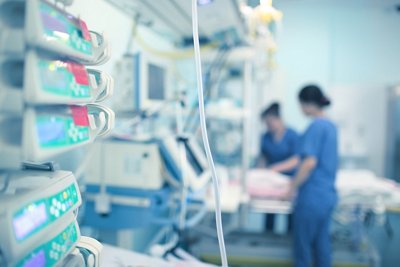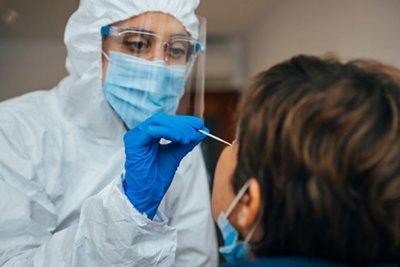Practices for potential prevention and early recognition of acute kidney injury
By the bioMérieux Editors | Reading time: 2 min
PUBLICATION DATE: JUNE 28, 2023
Acute kidney injury (AKI), a sudden reduction in kidney function, is associated with a high rate of prolonged hospitalization, in-hospital mortality and increased expenses for hospitals. Many studies have found that AKI is widely preventable. Research suggests that the incidence of AKI in hospitalized patients is between 22-57%, and that the overall in-hospital mortality rate for patients with AKI is around 12.8%. There is no approved pharmacological therapy to prevent, trat or enhance recovery from AKI, therefor identification of patients at risk is paramount.
While prevention can reduce the onset or severity of AKI, there are still challenges to overcome. A recent article states that, “…a lack of awareness of the importance of early recognition and treatment among health care team members and the heterogeneity of approaches within the health care teams assessing the patient remains a challenge.” The global need for increased awareness, improved guidelines, resources, and education continues to be important. In some countries, kidney workforce shortages are exceedingly frequent, making the time required to take care of the patient longer.
Potential prevention of AKI
It is necessary to check the patient's health history to detect any pre-existing health conditions. Indeed, there are many factors that put a patient at higher risk of developing AKI, including sepsis, COVID-19, exposure to nephrotoxic drugs, and co-morbidities such as type 2 diabetes mellitus (T2DM) and hypertension (HTN). Patients undergoing specific surgical procedures may also be at a heightened risk, such as cardiac surgery patients.
At least 50% of AKI episodes are believed to begin in the community setting. Healthcare professionals should identify at-risk patients and implement preventive interventions. After a patient is found to have a higher probability of developing AKI, there may be opportunities to lower the patient’s risk by modifying the nature of their upcoming procedure.
Another important method of prevention includes not only identifying those patients who are at an increased risk, but ensuring those patients have a care plan that includes for example a kidney health assessment every 12 months.
Early recognition of AKI
After doing everything possible to mitigate risks, it is imperative that the patient is monitored regularly for early recognition or diagnosis. Healthcare practitioners rely on a combination of diagnostic tools, symptoms and other risk factors to watch for the onset of AKI. There is an ongoing discussion on the methods used to quickly identify AKI— urine output and serum creatinine (SCr), are understood to be the gold standard for the assessment of kidney function.
However, SCr does not reflect glomerular filtration rate (GFR) and will not rise until approximately 50% of kidney function is lost. This is not an effective detection method. Essentially, by the time the serum creatinine level rises, kidney damage may have already occurred. There are a few alternative biomarkers currently being studied that have potential to be more sensitive than SCr in certain settings, and clinicians are also investigating new advanced analytic platforms to flag AKI before it occurs. Improvements and advancements with diagnostic tools, guidelines, standards, and analytical platforms have the potential to improve AKI related outcomes, but research must be prioritized to help develop and further optimize these tools.
Improving AKI detection and prevention
Nephrologist Jay Koyner, MD, professor of medicine at the University of Chicago, helps to define the need for more advanced tools to aid diagnosis and treatment for AKI by explaining, “there are pitfalls in the tools we use, and there has been a movement for more than the past two decades to try to find better ways to diagnose patients.”
Additionally, according to the UK National Institute for Health and Care Excellence, with proper prevention practices in place, as many as 42,000 deaths each year could be avoided. Knowledge of AKI has substantially increased over time; however, the need for continued research and education on a global scale remains essential.
You may be interested in these articles
SHARE THIS:
- Acute Care
< SWIPE FOR MORE ARTICLES >


